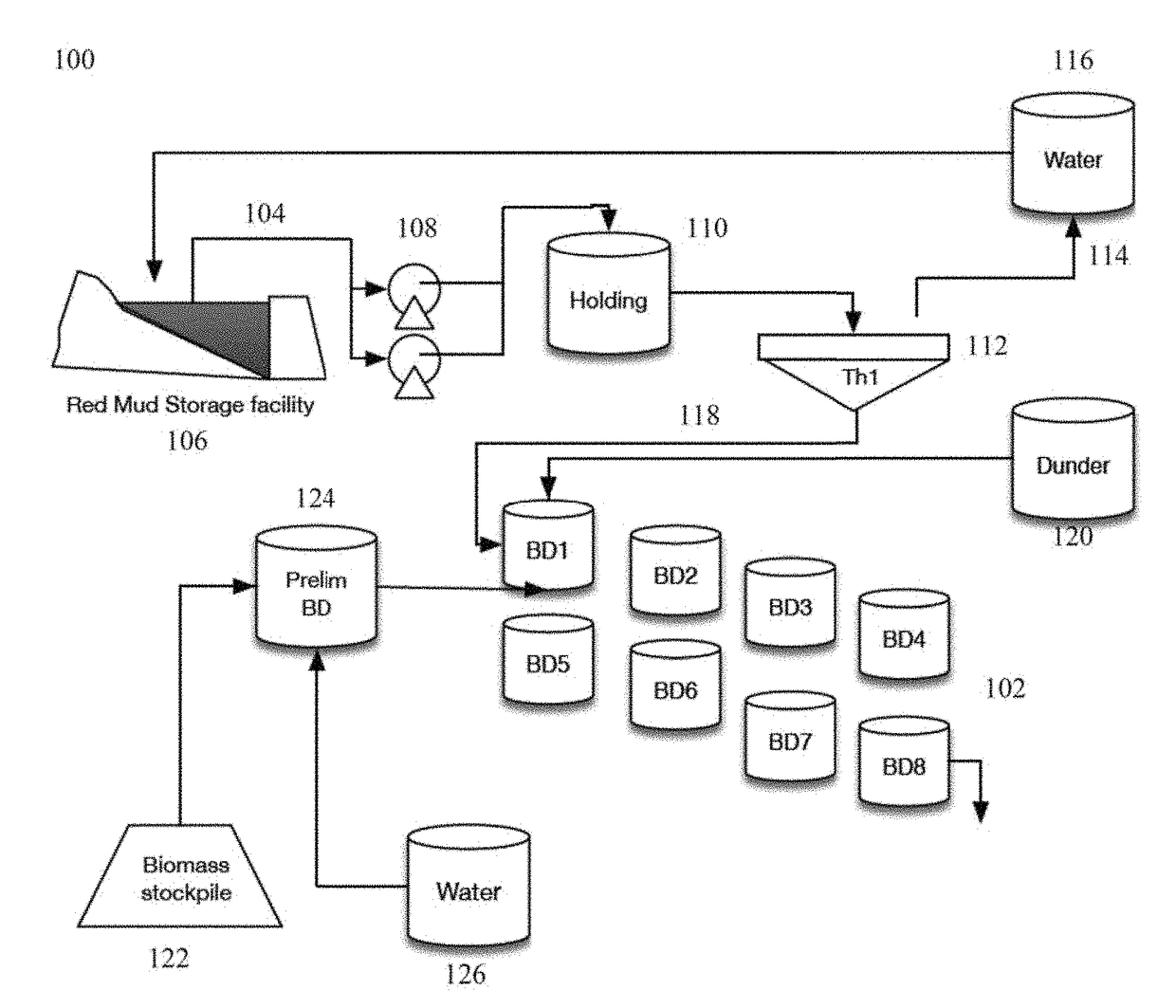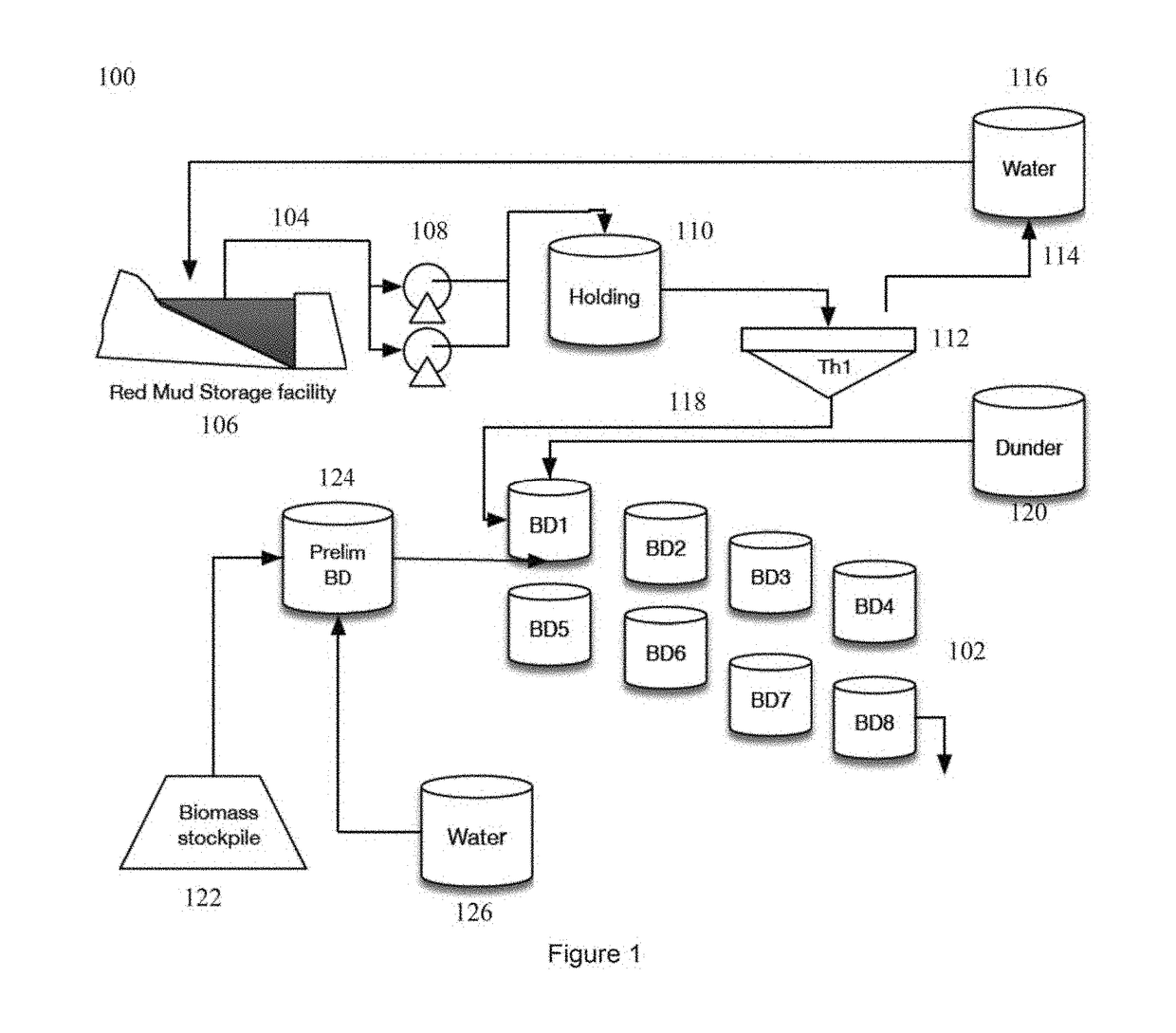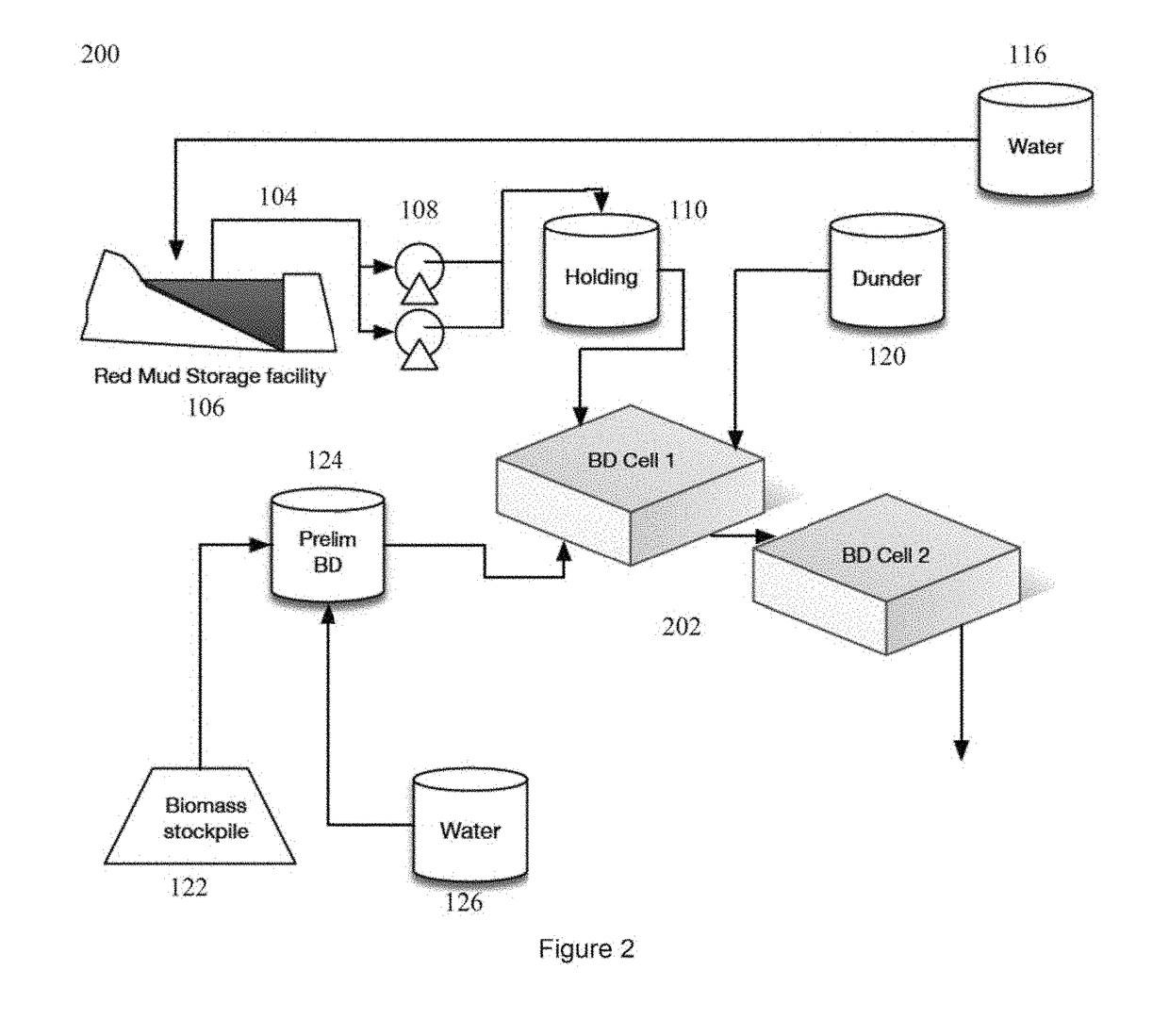Bioremediation of red muds
- Summary
- Abstract
- Description
- Claims
- Application Information
AI Technical Summary
Benefits of technology
Problems solved by technology
Method used
Image
Examples
Embodiment Construction
[0057]FIG. 1 provides an illustrative embodiment of a process 100 for the treatment of red mud according to the present invention using a train of stirred-tank bio-digesters 102 (each bio-digester designated as BD1 to BD8).
[0058]The use of stirred-tank bio-digesters 102 allows the conditions for neutralisation of the red mud to be carefully managed through precise addition of nutrients and better control of mixing and thus provides fast reaction kinetics (which corresponds with a lower residence time digestion). The use of stirred-tank bio-digesters also permits aerobic conditions to be easily managed or maintained if required.
[0059]A primary consideration with the use of stirred tank biodigesters 102 is that the practical maximum throughput for the bioneutralisation is restricted by the maximum volume of the tanks and required number of tanks in the process train. For the stirred tank biodigesters 102 used in this application the practical maximum volume is between 2000 m3 and 4000...
PUM
| Property | Measurement | Unit |
|---|---|---|
| Fraction | aaaaa | aaaaa |
| Fraction | aaaaa | aaaaa |
| Fraction | aaaaa | aaaaa |
Abstract
Description
Claims
Application Information
 Login to View More
Login to View More - R&D
- Intellectual Property
- Life Sciences
- Materials
- Tech Scout
- Unparalleled Data Quality
- Higher Quality Content
- 60% Fewer Hallucinations
Browse by: Latest US Patents, China's latest patents, Technical Efficacy Thesaurus, Application Domain, Technology Topic, Popular Technical Reports.
© 2025 PatSnap. All rights reserved.Legal|Privacy policy|Modern Slavery Act Transparency Statement|Sitemap|About US| Contact US: help@patsnap.com



